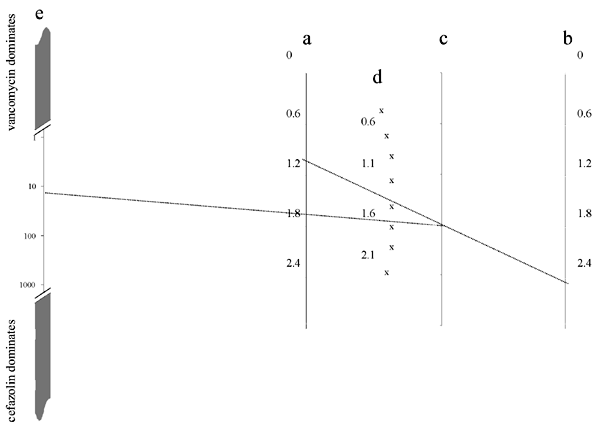Volume 7, Number 5—October 2001
Research
Clinical Consequences and Cost of Limiting Use of Vancomycin for Perioperative Prophylaxis: Example of Coronary Artery Bypass Surgery
Figure 3

Figure 3. . Determination of the incremental cost-effectiveness ratio of the routine vancomycin strategy relative to the routine cefazolin strategy, according to bacterial resistance pattern. To determine the incremental cost-effectiveness ratio: 1) Place percent incidence of surgical site infection caused by methicillin-resistant Staphylococcus aureus on the a axis; 2) Place percent incidence of surgical site infection caused by methicillin-resistant coagulase-negative staphylococci on the b axis; 3) Draw a line between these 2 points. This line crosses the c axis at a point x; 4) Place percent incidence of surgical site infection caused by cefazolin-susceptible gram-negative bacteria on the scale d; 5) Draw a line passing through this point and the point x on the c axis. If this line crosses the e axis between the two zones of dominance, the incremental cost-effectiveness ratio can be red (in thousands of dollars per additional death or surgical site infection averted). The dotted lines represent the example cited in text.